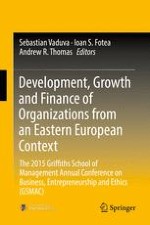2017 | OriginalPaper | Buchkapitel
3. Entrepreneurial Myopia and Succession-Based Crises in Family Businesses: A Strategic Options Perspective
verfasst von : Silvia Fotea, Jörg Freiling, Daniel Neagoie
Erschienen in: Development, Growth and Finance of Organizations from an Eastern European Context
Aktivieren Sie unsere intelligente Suche, um passende Fachinhalte oder Patente zu finden.
Wählen Sie Textabschnitte aus um mit Künstlicher Intelligenz passenden Patente zu finden. powered by
Markieren Sie Textabschnitte, um KI-gestützt weitere passende Inhalte zu finden. powered by
